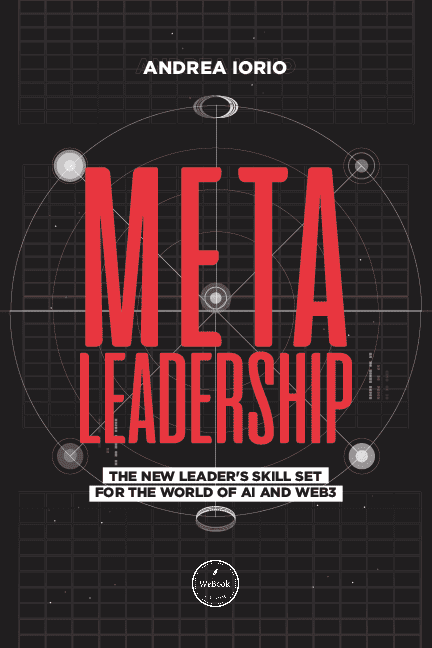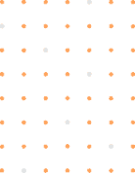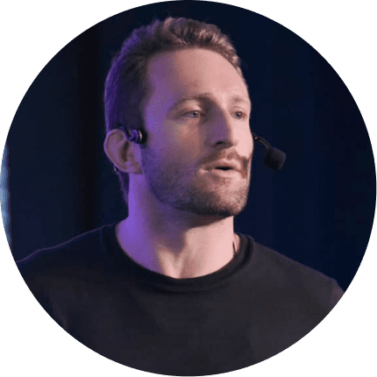I want to ask you a favor, to start off: if you are at home or in the office, open your computer and open a Google Docs. Even if it's on mobile, you can do it, you can use the app for that. Put a random title in Google Docs, and share the doc with 2 or 3 colleagues or friends, and ask them to put in some random phrases too, ideally funny ones or inspiring ones - just to have fun while doing it as well.
Now, you go to File, click on the tab and go to Version History, and click on View Version History. That's where you'll see the entire history of versions and adjustments made, at what time, and fundamentally rebuild the history of this Google Docs in a transparent and collaborative way.
Now I ask you: would you have been able to do the same in Microsoft Word? You could even see the history of your edits, but you wouldn't have the chance to build it collaboratively, involving others, at the same time. Right?
Now you might be asking yourself: Andrea, what does this have to do with Web3? Fundamentally everything, because this Google Docs analogy is really the best way to understand in its simplest way the Blockchain, the most important technological component of the Web3, which seems very complex but is actually much simpler to understand than we think.
And this is why in this episode we will take a step back and simplify the understanding of Web3 and its fundamental concepts and technologies.
Let's start off with a better understand what Blockchain is, since it is the underlying technological infrastructure of the Web3: the traditional way of sharing collaborative documents has always been to send a Microsoft Word document to another recipient and ask them to make revisions to it. The problem with this scenario is that you have to wait until you get the edited copy back before you can see it or make any other changes, because you're barred from editing it until the other person is done with it. That's how databases work today: two owners can't touch the same record at the same time. This is how banks maintain balances and money transfers; they briefly block access (or lower the balance) while making a transfer, then update the other side and reopen access (or update again).
With Google Docs (or Google Sheets), both parties have access to the same document at the same time, and the single version of that document is always visible to both parties.
This opens up an incredible new world, while fundamentally in virtually every market there has always been a need for an intermediary responsible for controlling "transactions": from banks in the financial sector to notaries in real estate, from retailers for consumer goods, even pharmacies for pharmaceutical companies: Blockchain represents a way to disintermediate and decentralize everything. Instead of a bearded guy wielding a long-stemmed pen to record tiny entries in a ledger, blockchain uses advanced cryptography and distributed programming to achieve similar results: a secure, transparent, and immutable repository of "truth" designed to be highly resistant to interruptions, manipulation and unnecessary complexity.
With blockchain, cryptology replaces third-party intermediaries as trustees, with all participants running complex algorithms to certify the integrity of the whole. It is this ability to replace intermediaries through mathematics that makes this technology important: using blockchain can reduce overhead costs when parties trade assets directly with each other or quickly prove ownership or authorship of information – a task that is currently nearly impossible without a central authority or impartial mediator.
And what does blockchain represent for Web3? Fundamentally the data infrastructure to disintermediate the big internet players like Google, Amazon and Microsoft and decentralize open and distributable data. Thus, users own their data and are free to trade them without worrying about losing ownership, losing privacy, or relying on intermediaries.
But what is Web3? Fundamentally, Web3 represents initiatives that are using technologies such as blockchain and tokenization to build a more distributed data layer on the Internet, where data can be owned, validated and authenticated by individuals and the items represented by a record - considering that the 3 technological pillars of the Web3 are, in Gartner's view, the semantic Web (which is fundamentally a way of organizing data in the Internet in such a way that machines can understand it in the same way that humans can), Artificial Intelligence (which is the ability of machines to perform, learn and design tasks that are normally performed by humans in the same way), and natural language processing (which is the ability of computers to understand human language by extracting meaning from context).
Let me explain further: imagine that I am a consumer goods company that sells my shampoos, for example, through a distributor, and the distributor sells to wholesalers, who resell to retailers, and retailers sell to hairdressers, and hairdressers resell them in the free market. What is my chance of knowing where my product is, if I discover that, for example, a batch is of poor quality and I have to recall it? Today, this is practically impossible. In the world of Web3, thanks to Blockchain, it will be extremely simple.
By now you must be thinking: "But Andrea, in the world of Web3 we will have too much data!" And you are right, to the point that the only way to work with all this data is through the improvement of Artificial Intelligence and Machine Learning, which even though are not exactly Web3 technologies since it has been developing over the last few years, it is the "electricity" that allows this absurd volume of data to be processed.
But going back to Blockchain, it is fundamentally the technological protocol on top of which Web3 applications are developed, and these apps are better known as dApps: Bitcoin is probably the most famous application. Decentralized applications must be open source and operate autonomously, without a particular authority in control, and have 4 major characteristics: dApps have their functioning defined by smart contracts, which register, confirm and execute operations automatically, without the need for human interference. How do "Smart contracts" work, which are key to the functioning of Web3?
Fundamentally, smart contracts are programs stored on a blockchain that run when predetermined conditions are met. They are typically used to automate the execution of a deal so that all participants can be immediately sure of the outcome, without any intermediary involvement or wasted time. Smart contracts work by following simple “if/when…then…” statements that are written in code on a blockchain. A computer network performs actions when predetermined conditions are met and verified. These actions may include releasing funds to the parties, registering a vehicle or property you have purchased, sending notices or issuing a fine. The blockchain is updated when the transaction is complete. This means that the transaction cannot be changed and only the parties who have been given permission can see the results.
For me a perfect analogy is an automatic food and beverage vending machine: the transaction doesn't need an intermediary, because it gives you the product if you make the payment.
For all that, you need insane computing power, which is why Web3 is powered by a new kind of computing called Edge. Edge computing is a solution that facilitates data processing so that it takes place near or at the very place where the information is generated, which goes a little against cloud computing, which is centralized. Augmented reality, for example, only gains a lot from edge computing, after all its operation depends on a powerful web connection to obtain an immersive experience.
Much of today’s computing already happens at the edge in places like hospitals, factories and retail locations, processing the most sensitive data and powering critical systems that must function reliably and safely. Edge is about processing data closer to where it’s being generated, enabling processing at greater speeds and volumes, leading to greater action-led results in real time. Edge allows businesses to bring the digital world into the physical. Bringing online data and algorithms into brick-and-mortar stores to improve retail experiences. Creating systems that workers can train and situations where workers can learn from machines. Designing smart environments that look out for our safety and comfort, and so on.
But getting back to dApps, following the principles of transparency and decentralization, another important feature of dApps is that their code is open, that is, anyone can have access to the programming behind the application. And finally, dApps work directly with tokens, since it is necessary to have this type of digital asset to access applications. Each dApp requires a specific token; for example, Ethereum requires ETHer.
Rewarding users for performing certain tasks and for their contributions is also given in the form of tokens. There are 3 types of decentralized applications, which are classified according to their functioning:
- Type I: apps that have their own native blockchain, such as Bitcoin and Ethereum;
- Type II: apps with their own tokens developed on the blockchain of a type I dapp;
- Type III: apps developed on blockchains of a type II dapp; also have their own tokens.
Even though this may now seem complex, we will understand much better why this is important as we delve deeper into the way in which traditional companies can embrace Web3 technologies. In the case of Bitcoin, the greatest example of a decentralized app, the mining process offers a reward, that is, tokens, to those who lend their computer's ability to process transactions, ensure security and maintain network synchronization.
Another well-known example is Ethereum. This dApp, however, is much more comprehensive than its virtual currency, Ether. It is an open platform aimed at executing smart contracts, used as a basis for other software in the most diverse categories.
We came to tokens: do you realize that they are the "currency" in the Web3 world, as they are what reward users for making Apps work? After all, think about it: if we performed a job, would we do it for free? Obviously not, and the same thing with Web3: to encourage people to "work" for the system itself to work, there has to be a reward, and that reward is the token. Now, the most popular tokens are the fungible tokens, and to explain how they work, I ask you: have you ever been to Las Vegas? Have you played at any of the casinos like Mandalay Bay, Caesars, and the like?
Well, there you exchange X dollars for tokens worth X dollars and you use these tokens to play: this is a perfect example of fungible tokens, which in reality are nothing new, but which have already been used since the 17th century by merchants in North America and England, which fundamentally were an exchangeable collateral for material goods at times when state-printed coins were scarce.
In the age of cryptocurrencies, the concept of tokens remains the same: the representation of something tangible (physical) or intangible (non-physical, i.e. a service) within your ecosystem. But it has 2 major categories: fungible tokens, and non-fungible tokens, namely NFTs.
On a blockchain, fungible tokens are cryptocurrencies like Bitcoin (BTC). Non-fungible tokens are units of data that represent a unique digital asset stored and verified on the blockchain. Tokens or fungible assets are divisible and not exclusive: for example, currencies such as the dollar are fungible: a $1 bill in New York has the same value as a $1 bill in Miami. A fungible token can also be a cryptocurrency like Bitcoin: 1 BTC is worth 1 BTC no matter where it is issued.
Non-fungible assets, on the other hand, are unique and indivisible. They should be considered as a kind of deed to a unique and non-replicable item. For example, an airline ticket is not fungible because there cannot be another one of the same type due to its specific data. A house, boat or car are non-fungible physical assets because they are unique.
The same applies to non-fungible tokens, which represent a single, indivisible item – physical or intangible – such as an image or intellectual property. Blockchain is the underlying technology that can easily prove ownership of an intangible digital item.
The main difference between fungible assets and non-fungible assets lies in the content they store. While fungible tokens like Bitcoin store value, non-fungible tokens store data like an academic title or a work of art.
Now you understand that non-fungible tokens are the famous NFTs, popularized recently by a speculative wave, but that go far beyond being just digital monkeys or digital works of art, even if they are the most obvious applications. But if NFTs are fundamentally tokens that prove ownership of a digital item, think about what this might imply for other areas: can your health data be NFTs owned by you, rather than owned by labs or hospitals? Think about patents, which can always be attributed to their true inventor, and not illegally copied or replicated? NFTs can transform event markets, replacing tickets as well as airline tickets.
That is, they can have totally transformative uses in industries that are not necessarily gaming - which we usually associate with NFTs - or are just speculative items. It's much more than that! They are even proof of ownership of land in the metaverse: well, what will guarantee that the land you buy in the metaverse is yours is an NFTs!
This is where, before we understand the relationship between NFTs and the metaverse, let's better understand what this metaverse is all about, since inasmuch NFTs was the buzzword in 2021, Metaverse is the one in 2022.
Metaverse is the great graphical interface of the Web3: with AR/VR/MR technologies, all interconnected to the real world through improvements of Internet of Things technologies (sensors, wearables, intelligent materials that may have microchips that make them interconnected) that share latency-free data over 5G, what happens? You have a programmable world, as defined by Accenture, where control, customization and automation will be entangled in the environment around us. People will have an unprecedented ability to command the world to suit their individual needs, deciding what they see, interact with and experience with greater ease and fidelity than ever before.
That is, instead of the internet as a collection of 2-dimensional websites and apps, the metaverse is a 3D environment where moving from work to a social platform can be as simple as walking from the car straight to the doctor's office. We see the metaverse as an evolution of the internet that allows the user to go beyond browsing to inhabit and/or participate in a persistent shared experience that spans the spectrum from our real world to the fully virtual and in-between. We talked a bit about the Metaverse and its characteristics in the previous episode, so we won't go into too much detail here, but it fundamentally combines the physical world and the digital world in a symbiotic way - almost as if one were a mirror of the other - to the point that in 2019, Kevin Kelly already wrote in his cover story for Wired magazine, that we are all today "welcome to the Mirrorworld", that is, a mirrored world of Digital twins and augmented reality.
What is that allows the Metaverse to come to life, and particularly its application of Digital Twins? Well, it's fundamentally the hyperconnectivity of the modern world and its infinite volume of sensors and IoT: to give you an idea, let's use the example of the health sector. Data from precedence research shows the Internet of Medical Things market is expected to increase by almost 5 times in size between 2020 and 2030, reaching $172 billion. That brings us back to the relationship: more sensors and IoT, more data to feed the digital twins that make up the Metaverse, right? And more edge computing to process all this data on the spot, and you have an exponential impact.
And going back to NFTs, since in the metaverse the economy depends on authenticating digital properties like home, car, farm, books, clothes and furniture, and so on, and it also needs the ability to travel and trade freely between realms that may have different laws and rules, what do you need? Of course NFTs, which will be the linchpin of the metaverse economy, by allowing the authentication of ownership, properties and even identity. As each NFT is protected by a cryptographic key that cannot be deleted, copied or destroyed, it allows for a robust, decentralized verification – of its virtual identity and digital possessions – necessary for the metaverse to succeed.
So far so good, but here's a question that I know you're asking yourself: that is: in the Metaverse, with tokens, NFTs, smart contracts and the like, how will people organize and collaborate, socially but even more in Business? Because you see, in business today, we use hierarchical structures to manage people, because apparently there is no way to replace the control that a manager can exercise on his team. Apparently, because if you get back to the smart contracts concept, you understand that they are precisely what allow the replacement of this control - now done by the blockchain on which the contracts are executed -, and the emergence of a new organizational structure, that is, the Decentralized Autonomous Organizations, or DAOs.
A DAO is a new type of organizational structure, built on blockchain technology, which is often described as a kind of cryptographic cooperation. In their purest form, DAOs are groups that form for a common purpose, like investing in startups, managing a stablecoin, or buying a bunch of NFTs, but not only - also doing research, or organizing events, and so on. ConsenSys, a blockchain organization, defines DAOs as “government bodies that oversee the allocation of resources tied to the projects they are associated with and are also tasked with ensuring the long-term success of the project they support.” Once formed, a DAO is managed by its members, usually through the use of cryptographic tokens. These tokens often come with certain rights, such as the ability to manage a common equity or vote on certain decisions.
So eventually when you look at all that, and try to put it together, you can sum it up like this:
- Blockchain: the data protocol, which fundamentally determines the technological infrastructure of Web3;
- Metaverse is the interface of Web3;
- Fungible tokens are the currency of Web3;
- NFTs are the goods of Web3;
- DAOs are the communities - professional and non-professional - of Web3;
- Artificial Intelligence is the electricity that makes data meaningful.
- 5G is the latency-free communication standard that gives life to the metaverse, and Edge is its computing power.
Keywords Digital Transformation: Web 3, Web 3.0, Web 101, Bitcoin, BTC, Cryptocurrency, NFTS, 5G, Digital Twins, DAOS, Blockchain, Big Data, ReD, AI, AR, RPA, BASF, CX, B2B, Open Innovation, Andrea Iorio, Leadership, Web 3, Business, What is Digital Transformation, Business Transformation, Defining Digital Transformation, Digital Transformation Company, Digital Transformation Strategy, Technology Transformation, What Does Digital Transformation Mean, Wired magazine









